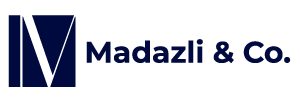
For organizations that receive multiple funding sources through grants or other means it’s always good to mark your receipts, invoices and contracts with the line item number corresponding with this grant so that funders, your board of directors and even CRA can clearly see that money is being put to work in accordance with what you’ve received it for. It will save you much time and hassle to do this as you go than double back and try to put the pieces together as tax season or other reporting deadlines approach. Less stress makes you a more effective Executive Director, Treasurer or Coordinator.
While you’re at it, try to get in the habit of marking all receipts and invoices with the itemized number in your books. This will save your bookkeeper time and save you and the auditor time if and when your audit happens. Sometimes things that should be in one category are included in another, the sooner you can spot the discrepancy the better. Which brings us to a third best practice.
It’s always a good practice to have your monthly statement reviewed before and/or at your monthly board meeting. If you have a budget & finance committee or even just a devoted Treasurer it’s good to make sure they see it before the entire board, particularly if there are any “surprises” that may need attending to or discussion. This is a professional courtesy but it can also go a long way towards building a healthy and respectful working relationship between you and your Treasurer, Board Executive, or Committee.
The board is ultimately responsible for the governance of the society and have a legal/fiduciary responsibility to ensure that funds are being utilized in accordance with the purposes and bylaws of the organization and in an effective and responsible way within that mandate. Don’t let your monthly bank reconciliations and bookkeeping fall behind. By knowing month by month, if not at the very least quarter by quarter, how your financial position is changing you can spot trends sooner and deal with any surpluses or deficits in your program spending and adjust with confidence if need be. With everyone being on the same page your board will have more confidence and trust in you and you likewise will be able to better utilize their skills and judgement to assist you in being a more effective ED or coordinator. This in the end will only improve the mission impact of your organization.
